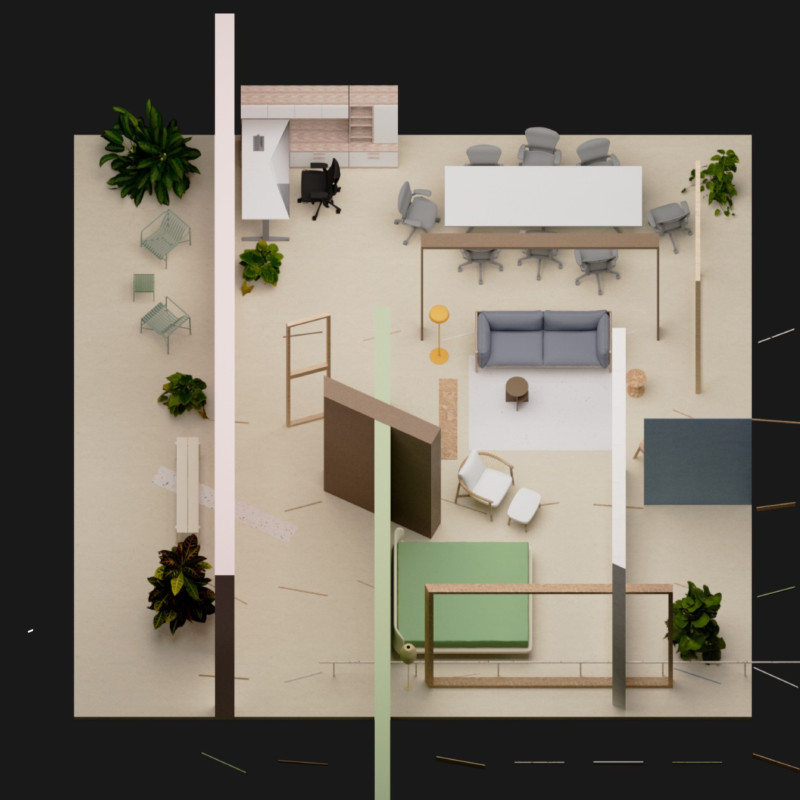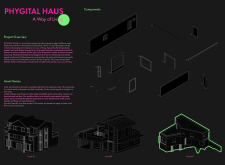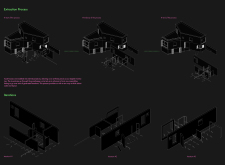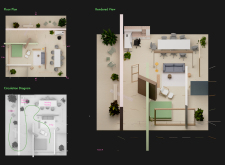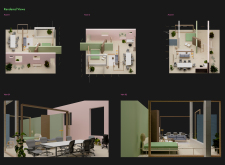5 key facts about this project
PHYGITAL HAUS represents a contemporary exploration of the relationship between virtual and physical spaces. Located on the boundary of these two realities, the design addresses the ways modern living has changed, particularly in the wake of recent global events. By functioning as a virtual house system, it allows users to select and customize living environments using assets from both actual homes and online sources. The design promotes flexibility and adaptability, enabling a dynamic reconfiguration of spaces to suit the needs of individuals and families.
Asset Remixing
The core idea of PHYGITAL HAUS is its modular approach. This design allows for easy alteration of rooms and layouts, which can change based on user preferences. Through a process of extraction, asset houses are separated into individual components. This flexibility cultivates creativity and interaction, encouraging users to mix and match elements into new assemblies. Each person can create a space that truly represents their style and functional requirements.
Digital Inventory and Sustainability
Focusing on digital inventories is an important aspect of the project. It promotes the idea of upcycling virtual assets, addressing concerns about e-waste in today’s digital world. Users can easily access a wide selection of asset houses available online, encouraging thoughtful choices about how these resources are used. Instead of relying on traditional materials, this project highlights the importance of a digital approach. It encourages resourcefulness, making use of existing designs in innovative ways that reflect current sustainability practices.
Circulation and Space Organization
The design of PHYGITAL HAUS includes thoughtful circulation that enhances how people move within the space. Areas are divided for work, leisure, and personal activities, ensuring that movement is intuitive. Diagrams clarify this organization, allowing for a better understanding of how spaces connect. This careful attention to circulation is vital for creating an environment that meets the diverse needs of its users and makes navigating the space easy.
Visual Representations
Rendered views of the project provide a detailed look at how each area is designed to operate. These images illustrate how spaces relate to each other, creating a cohesive living experience. By showcasing various configurations, the visuals reinforce the notion of adaptability in design. Each representation helps to convey how the space might respond to different lifestyles and preferences, emphasizing the potential for personal expression within the architecture.
PHYGITAL HAUS embodies a unique vision focused on integrating digital assets, promoting adaptability in design, and emphasizing sustainability. The approach of using remixable components offers an insight into future living environments. It shows how individual expression can meet practical needs, leading to a more personalized experience in everyday life.


